PAPPY FLYNN – A TRAVELING MAN
Pappy Flynn – A Traveling Man
Thomas Joseph Flynn, my maternal Grandfather was born in The Potrero Hill neighborhood of San Francisco on April 8, 1881. He died June 29, 1960 in Grass Valley California. He was said to be one of 13 children although only three survived to adulthood. The family lived at 610 18th Street in the Potrero where his mother Julia ran a small neighborhood market. His father, Michael was a drinker and Pappy told me that one night he and his brothers way laid him as he was coming up the stairs to where they lived and knocked him down the stairs. Evidently, he never returned.
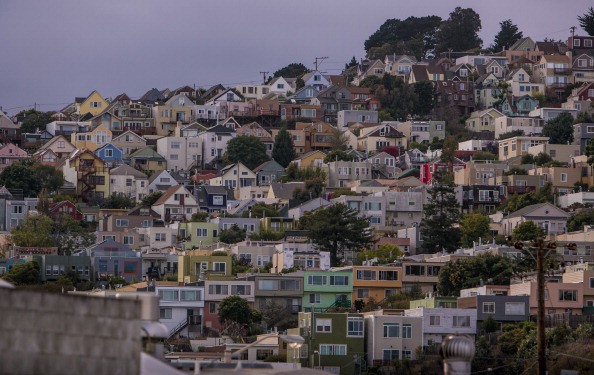
Potrero Hill neighborhood of 2020. In Pappy’s day, it was quite rural with fields of California Poppies on south facing slopes. It gradually evolved into a working class ghetto. These days it has become highly gentrified with a few rough spots. Recently an old, beat up house came on the market for 2.5 million. This has happened to many of the old neighborhoods of THE CITY as Californians like to call it. As far as they are concerned there is only one city in California – San Francisco.
Tom enlisted in the US Navy at Mare Island, CA in 1897 at age 16; his mother had to give consent. He was paid $9 per month. He was on the receiving ship USRS Independence until August 1897 (a receiving ship was an old semi-retired vessel anchored somewhere to act as a recruiting depot.) Next he was on the USS Adams until February 1898. The Adams was a single screw wooden hulled bark rigged steamer. She spent the fall of 1897 visiting ports on the West coast of US and Canada. In November the ship docked in Hawaii for three weeks. Next stop for the Traveller was the Cruiser USS Baltimore. They delivered badly needed ammunition to Commodore Dewey in Hong Kong and Mirs Bay. From there they
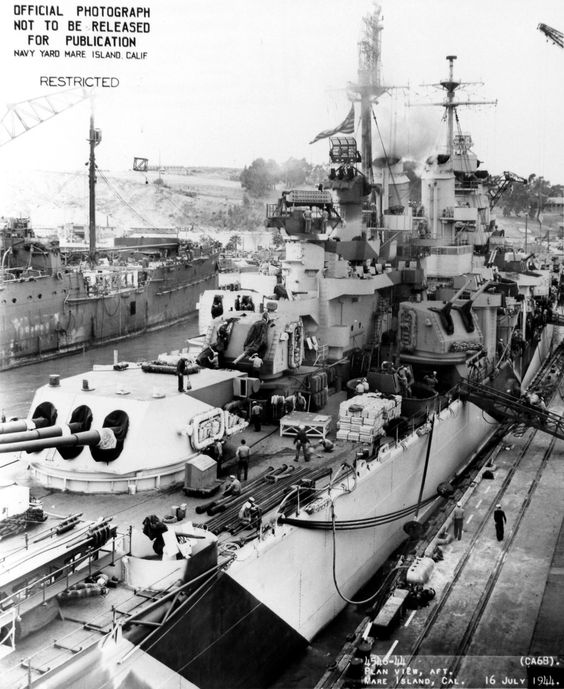
The Baltimore
sailed to the Philippines for some serious action. The Baltimore served with the US Asiatic Squadron under Dewey and took part in the battle of Manila Bay on May 1, 1898. She was the second largest ship in Dewey’s fleet and an important part of the attack which was mainly a duel with Spanish shore batteries. The only casualties on the Baltimore were caused by a single shell which rattled around the deck wounding 8 men. The Spanish Fleet was destroyed. The Baltimore remained on the Asiatic Stations convoying transports and protecting American interests until May 1990 when she sailed for New York via the Suez Canal.
Thomas didn’t go along. He was stationed on the USS Yorkton from June 1900 to April 1901. The Yorkton was a steam driven schooner rigged small cruiser classified as gunboat and patrolled the northern Philippines. With the Boxer Rebellion underway in China, she was sent to Northern China to assist in relieving foreign legations that were under siege from Chinese troops. Her landing force served ashore at Taku. In June of 1900, she assisted the Oregon in backing off a reef there then departed Shanghai and reached Cavite in the Philippines a week later. She resumed pacification duties there.
In February 1901, Thomas began suffering from vertigo and nervous prostration which became quite disabling. He also contracted malaria. He was honourably discharged in San Francisco and was awarded The Spanish, Philippine and China Badges.
He moved back to San Francisco and found that his nervous condition had rendered him unfit for manual work. His mother nursed him at home. Because of his inability to do hard work, he took a course at Heald’s Business College in San Francisco for six months then landed a job as a time keeper at Risdon Iron Works where he stayed for about 5 years.
About 1905, he moved to Goldfield, Nevada where he was a bookkeeper at the office of Webb Parkinson. He moved back to San Francisco about 1907. He married Mildred Hanson at San Jose in about 1909. He was living with Mildred in a tent outside of Bishop, CA when he had a stroke that left his right side partially paralysed. This condition lasted the rest of his days. He had to have his clothes custom made to accommodate his handicap.
In October, 1909 he was back living with his family in the Potrero working as a book keeper. Mildred is living in Los Angeles with her father and Thomas is now working as a stock broker. During this time he went for trips to Santa Cruz, to Nevada and to Williams AZ for his health.. He and Mildred were divorced on June 5, 1911. Shortly after the divorce, she married Fred Thomas and they operated the Bullard Hotel in Silver City, NM.
In May, 1913 he is in Winnimuca County NV in the mining business. In Dec, 1915 he is living in Reno and is Secretary – Treasurer of the Nevada Lincoln Mining Company. In January, 1913 he is engaged to Helen Sanderson of Adams, MA. They are married in Goldfield, NV Jan. 4, 1919.
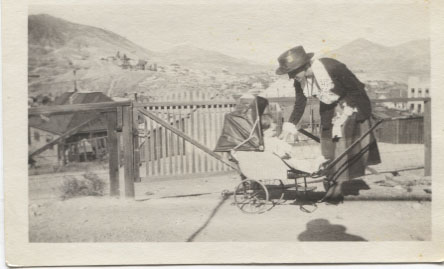
Mother and Auntie going for a walk in Tonopah
In May, 1920 he is the office manager for Smith and Amann, a stockbroker’s office in Tonopah NV where he and Helen are living on Ellis Street. By May 1923, he is back in San Francisco at 364 Bush Street. By May 1925, he is a member of the San Francisco Stock Exchange. He is now living in San Francisco or across the bay in Oakland. In October of 1928; he sold his seat on the San Francisco curb for $47,000 which yielded him a profit of 31,000 in one year. He continues as a member of the San Francisco Mining Exchange which he continued to work with until late in life.
From the Nevada State Journal of October 22, 1928:
“Tom Flynn made quite a fortune during the Goldfield boom most of which he later lost and a serious sickness followed. He is credited with having made a bunch of money during the divide boom. Having learned a lesson from the Goldfield boom this time he kept his money and has been adding to his capital ever sense. He is widely known in Nevada and on the coast and has a high reputation for square dealing. Mr. Flynn has a reputation of being a very shrewd operator…”
It was also said that Tom Flynn had a hand in the development of skiing in the High Sierras.
In September 1932, he bought the Marshall Ranch in Grass Valley, CA. The ranch adjoined the Empress Mine. He became superintendant of the Rockland Mine near Yerington, NV. On May 12, 1920 his daughter Helen Jane (Elaine) was born in San Francisco. From family photos it appears she also lived in Oakland and Tonopah with Hazel her mother and her Auntie Helen who acted as a kind of secretary- executive assistant to Pappy.
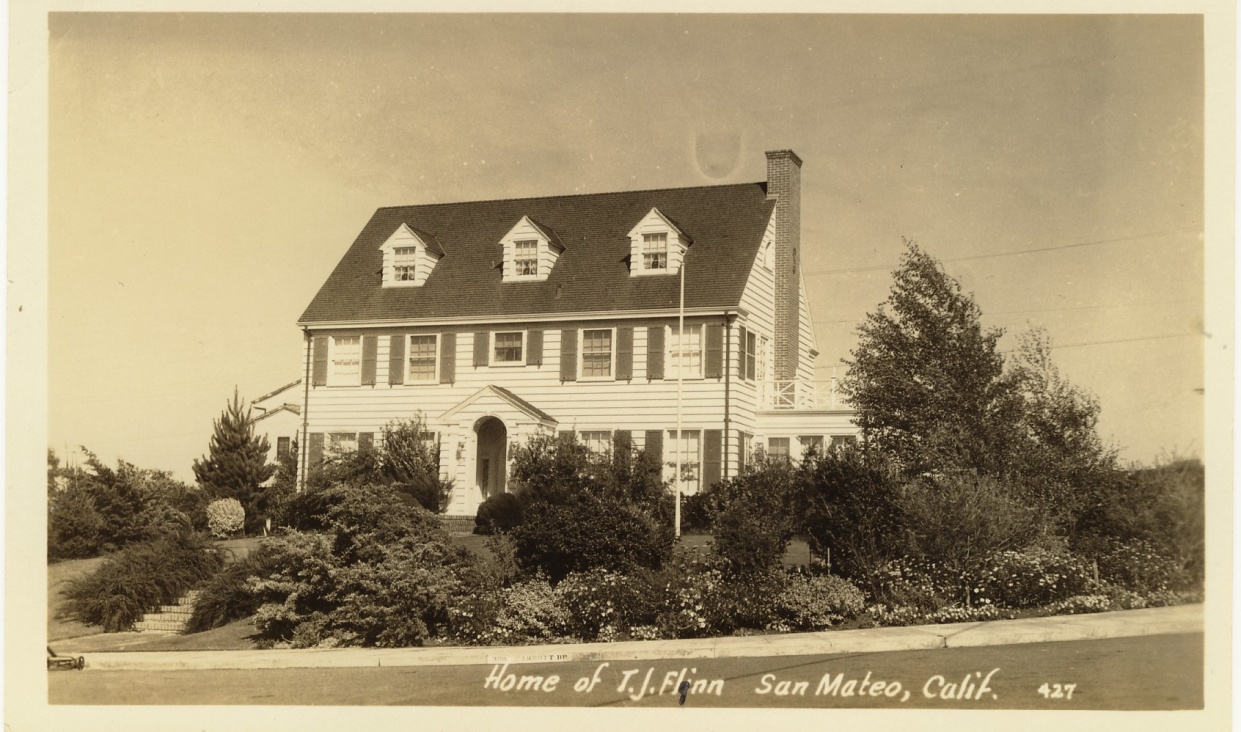
The Flynn at 373 Parrot Drive, San Mateo, CA
By 1930, the family is mainly living at 373 Parrot Drive in the Bay Wood neighbourhood of San Mateo, CA. Pappy had this large and beautiful home built from old growth redwood lumber. It still stands as a testament to quality. This is the period when Nana (Hazel) and Pappy did a lot of travelling sometimes taking Helen Jane (my mother along). They visited Europe, especially Germany, The Orient, especially China and Japan and the Caribbean. But the Parrot Drive home was his pride and joy. I once lived there with my Mother while my Dad was away in the Second War. I was very young but remember having a garden of nasturtiums and marigolds and helping Roy the Filipino Gardner and my best friend. I can also remember going over to Halfmoon Bay with Pappy and up to the Stock Exchange in the City on the train. He introduced me to his friends and fellow workers and we had lunch at The Old Poodle Dog, a beyond ritzy restaurant. I also remember him taking me to baseball games and to visit merchants around San Mateo like Mr. Merkel at his cigar store. When I became older (about 12) Pappy, mother and I went to Alaska on the CPR boat The Princess Louise. This must have been one of the most early cruise ships on this run. Pappy provided me with lectures on the stock market and money management and many reminders on table manners. We landed in Prince Rupert, Ketchicikan, Sitka, Wrangell and Juneau and took the White Pass and Yukon Train from Skagway to Whitehorse. Of Course Pappy was fascinated by the old gold rush country and must have wished he was among the stampeders. He loved to travel and as he got older he would stick to more local trips. He came up to BC quite often. He loved to prowl around Ainsworth and Kaslo. They had also had their mining days and had lots of mining history. He also loved to fish and had a good split cane fly rod. I can remember him going up Woodbury Creek and hurting a leg clambering around on the slippery boulders.
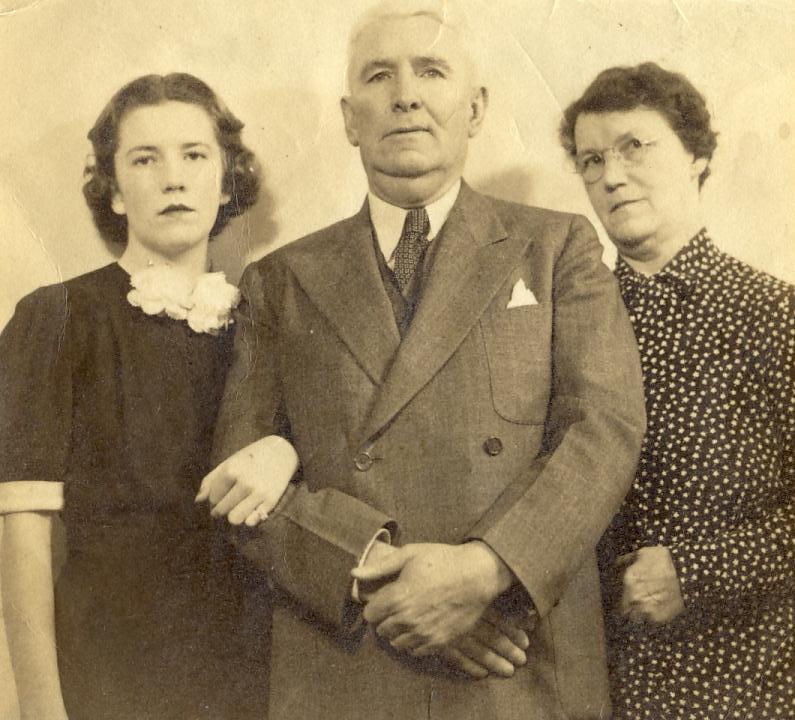
The Flynn’s: My Mother, Pappy and Nana
Sometime in the 1950’s Pappy started to slow down. His ailments of the navy days and his stroke aftermath plagued him along with heart issues. He, Nana and Auntie moved to an apartment down by the El Camino at 321 Dartmouth Road about 1955. Pappy died on June 25, 1960 in Grass Valley which was a kind of haven for him. When he became under the weather he would sometimes go up and see Dr. Farthing, his long time physician who would place him in the hospital for a week or so until he was ready to carry on.
A curious feature of Pappy’s life was the lifelong argument he had with Veterans’ Affairs over whether or not he was entitled to a disability pension from his Navy Days. He even hired a Washington DC lawyer to act on his behalf as far back as 1903. By 1910 he was receiving a small stipend which was increased somewhat over the years. He never explained that he was a man of wealth and had no need for the stipend.
He was buried in Golden Gate National Cemetery with a 21 gun salute
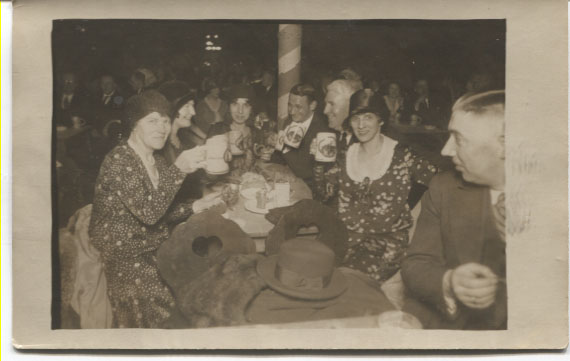
Happy Days: Nana in the left foreground and Pappy the second man in from the pole with the white hair. They are on board a ship which was the main mode of long distance travel for many decades.
Ted and John Frederick Burns/2020
‘
Tags: ship travel was common